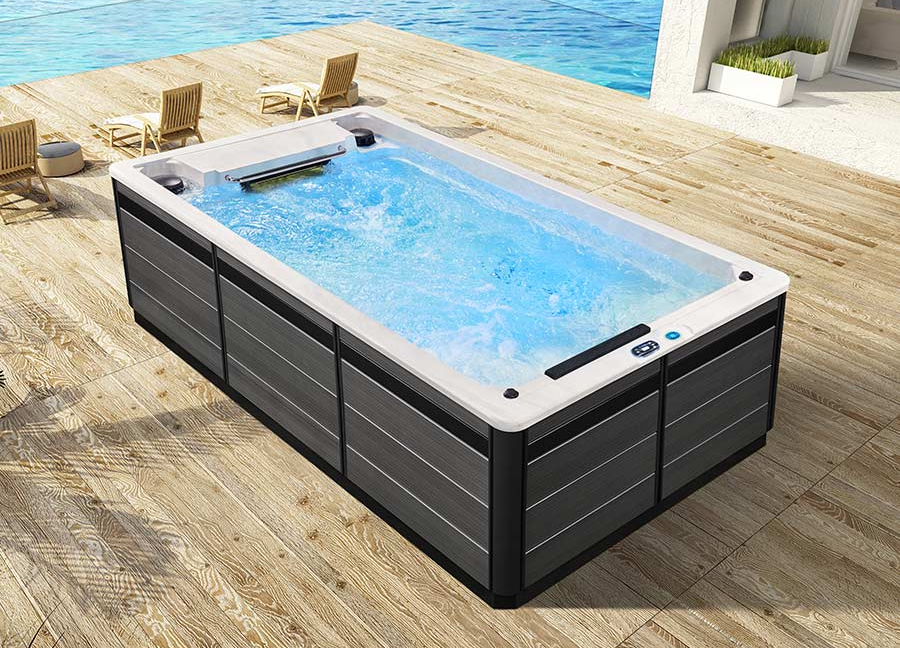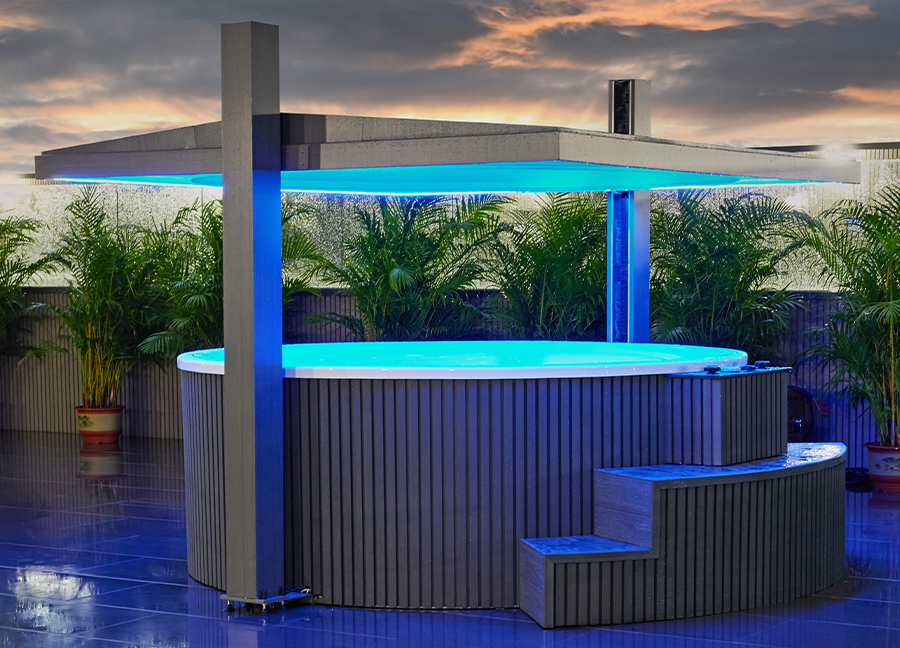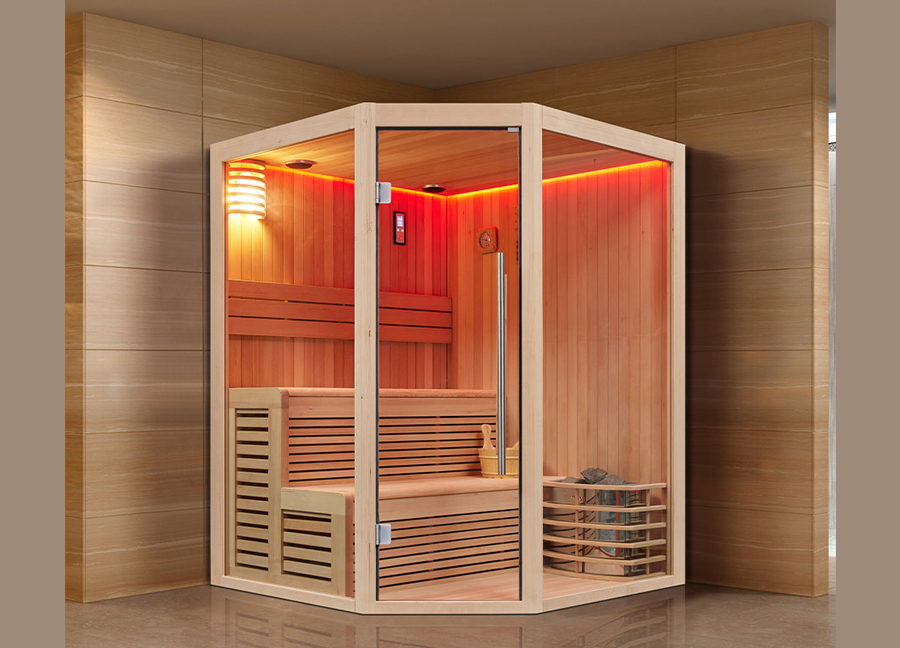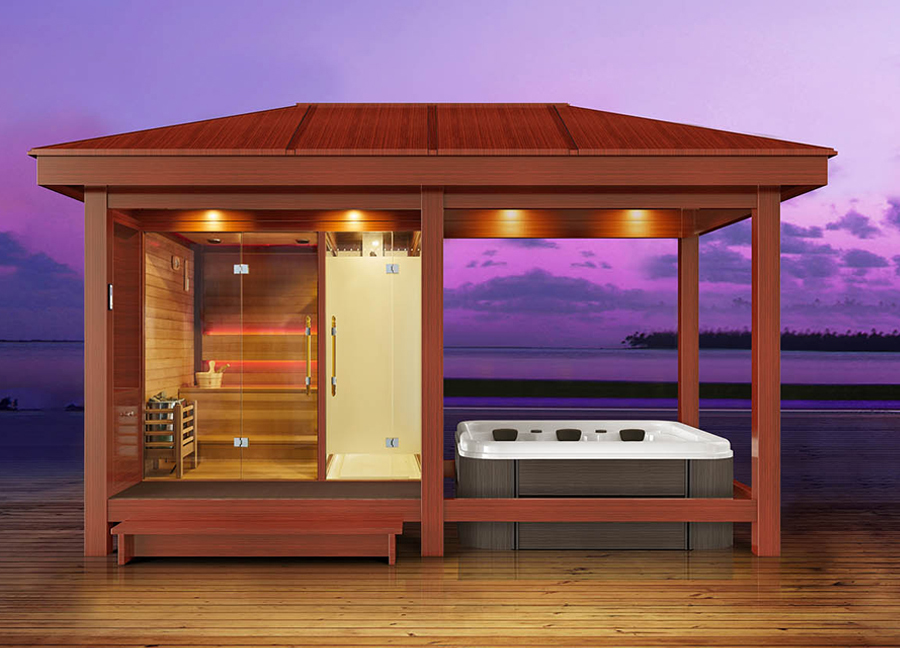In modern wellness, saunas have become a popular therapeutic method for detoxification, relaxation, and improved circulation. Outdoor saunas, particularly in private gardens and health clubs, have become a common trend.
Many sauna systems offer both traditional dry saunas and integrated steam saunas, providing users with more options. However, when both types of sauna are available, many people wonder: Is it better to use a steam sauna first or a dry sauna first?
This article will provide a professional comparison and analysis of the "dry first, steam later" and "steam first, dry later" methods, focusing on the mechanisms of action of a sauna steam room and offering specific recommendations based on the characteristics of different populations.
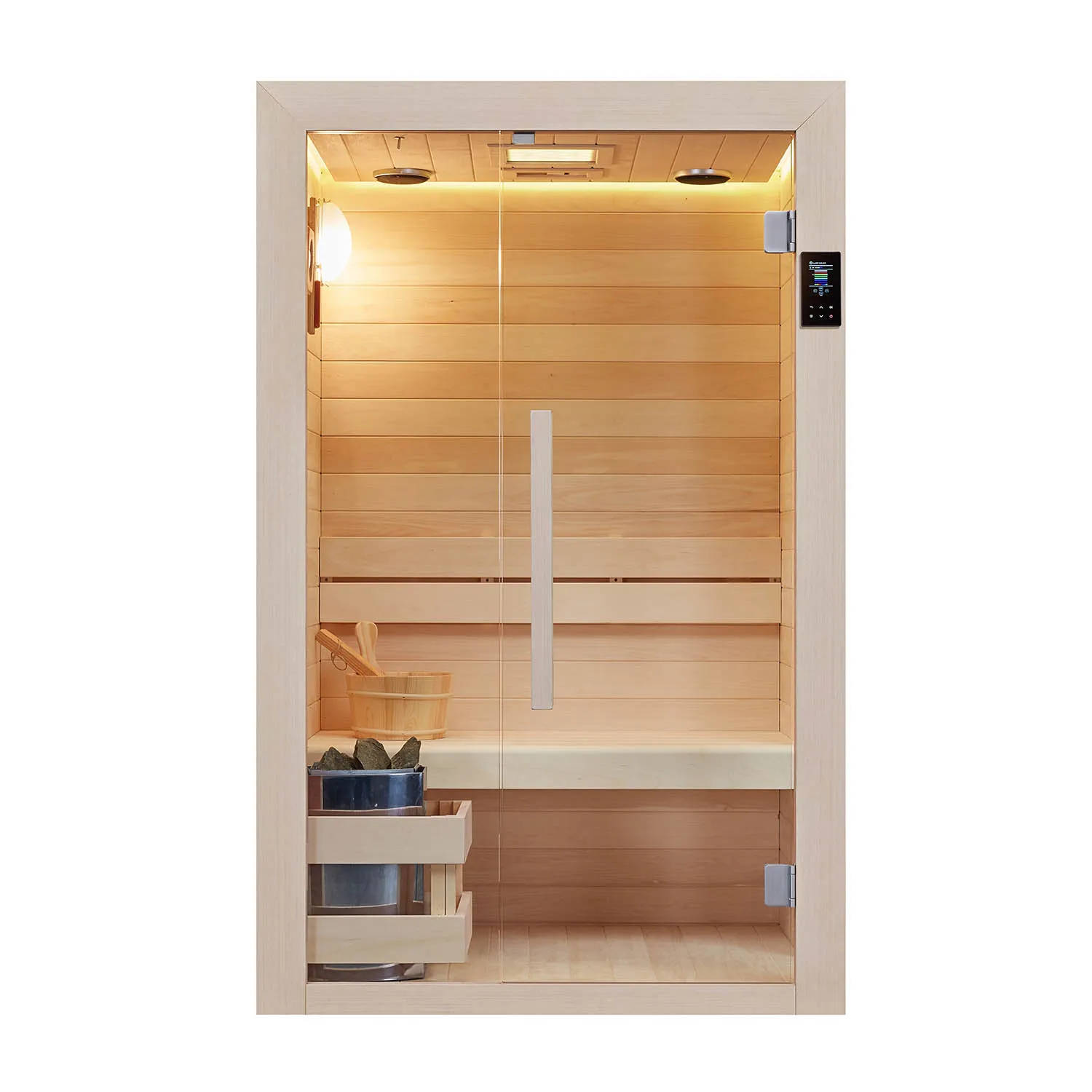
Differences Between Sauna Steam Rooms and Dry Sauna Rooms
To answer the question of "dry first or steam first," it is important to first understand the fundamental differences in the principles and physiological responses of the two types of saunas.
Indicators | Sauna Steam Room | Dry Sauna Room |
| 1. Temperature | Typically 40-55°C | Typically 70-100°C |
| 2. Humidity | Relative humidity close to 100% | Typically 5%-20% relative humidity |
| 3. Heat Transfer | Heating through steam, highly efficient heat transfer | Heating through dry, hot air, resulting in slower heat transfer |
| 4. Sweating Reaction | Sweating is rapid but superficial | Produces more sweat, deeper and more viscous |
| 5. Respiratory Effects | Hydrating the nose and throat | Dry air can irritate the respiratory tract |
| 6. Skin Effects | Moisturizing and promoting pore opening | Encourages pore opening and deeper perspiration |
| 7. User Comfort | Gentle sensation, suitable for beginners | The heat is intense, requiring acclimatization time |
Conclusion: Sauna steam rooms focus on moist heat, while dry saunas emphasize deep heat stimulation. The two methods stimulate and respond differently to the body, affecting the optimal order of use.
A Comparison of the "Steam First, Dry" and "Dry First, Steam" Strategies
1. "Steam First, Dry": First use the sauna steam room, then enter the dry sauna room
Theoretical Basis:
· The steam environment provides a mild, moist heat, ideal for initial body warming;
· Opens pores and activates superficial sweat glands;
· The higher humidity helps the respiratory tract adapt to high temperatures;
· Subsequent entry into the dry sauna room can further increase body temperature, improving perspiration and heat tolerance.
Advantages:
· Reduces the body's stress response to high temperatures, enhancing adaptability;
· Avoids dizziness and dry mouth caused by direct exposure to high, dry heat;
· Helps gradually raise body temperature, completing the heat therapy process more effectively;
· More suitable for people with sensitive respiratory tracts
Disadvantages:
· If you use the steam room for too long, your skin may become overly hydrated, making entering a dry sauna slightly uncomfortable.
· Sweat after steaming is more difficult to evaporate, resulting in a sticky feeling in a dry sauna.
2. "Dry First, Steam Later": Use the dry sauna room first, then enter the sauna steam room
Theoretical Basis:
· Directly and quickly raises core body temperature.
· Rapidly induces sweating on the skin, stimulating a detoxification response.
· Subsequent steaming helps alleviate the irritation of dry heat, softening the skin and detoxification pathways.
· Provides a "humidity-regulating" effect, preventing over-drying and dehydration.
Advantages:
· The initial stimulation of a dry sauna session stimulates faster and stronger sweat production.
· A steam sauna session can alleviate the discomfort of dry heat.
· Deeply cleanses the skin, making it suitable for detoxification and beauty purposes.
Disadvantages:
· First-time dry sauna users may experience a sharp increase in heart rate, dizziness, and other discomfort.
· The dry, hot environment irritates the respiratory tract, making it particularly unpleasant for those with allergies.
· Steaming after a dry sauna session may prevent the rapid dissipation of damp heat, leading to chest tightness.
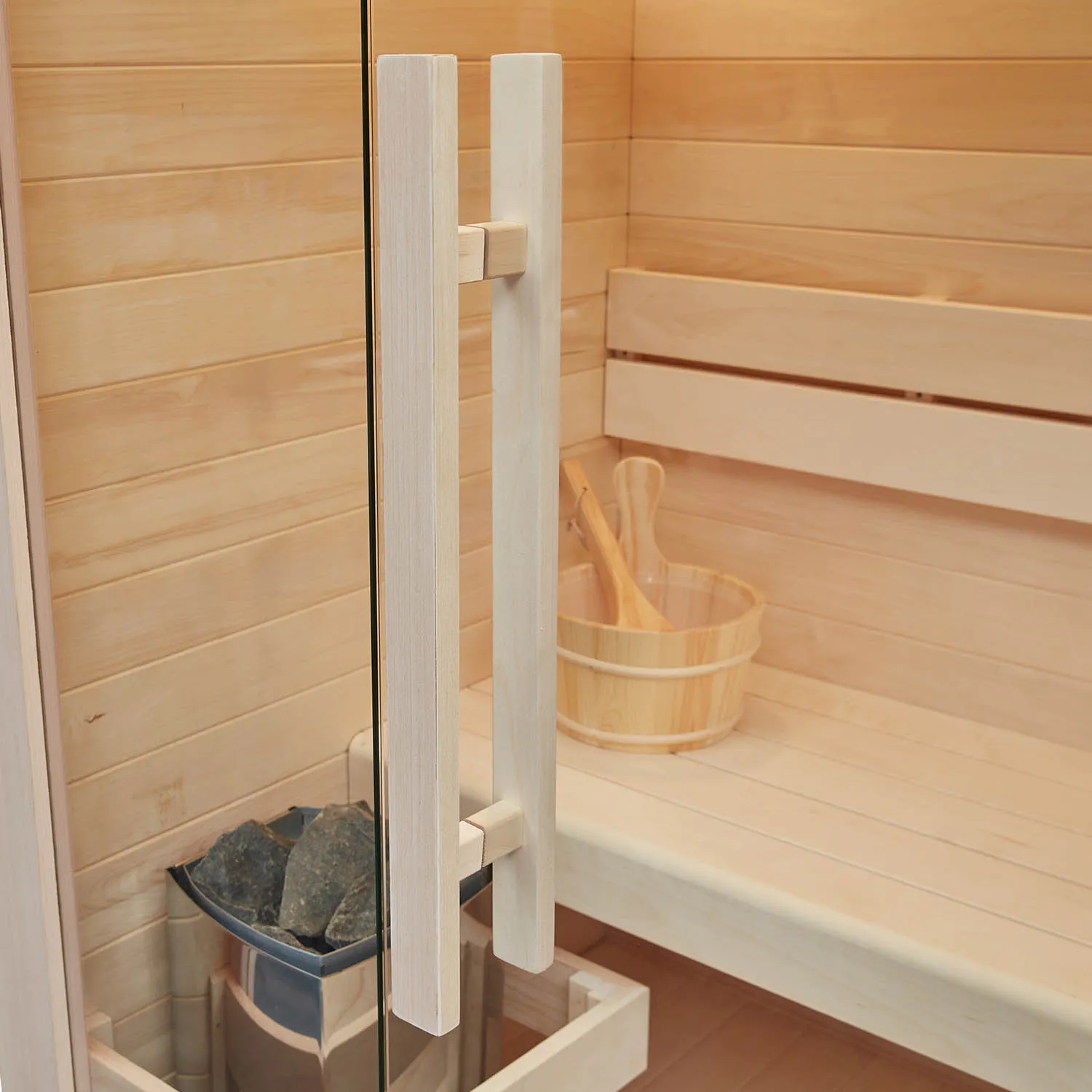
Analyzing the optimal sequence from a physiological perspective
1. Over-responsiveness of the body's thermoregulatory mechanism
· In high temperatures, the human body relies on perspiration and capillary dilation to dissipate heat.
· The humid air in a sauna steam room hinders sweat evaporation, resulting in a rapid rise in body temperature but shallow perspiration.
· The dry, hot air in a dry sauna room accelerates sweat evaporation, allowing for deeper heat transfer and more intense sweating.
· Preheating the body with a steam sauna session can help prevent excessive heat stress after entering a dry sauna session.
Conclusion: Based on the logic of thermoregulation, the "steam first, dry later" approach is more scientific and reasonable.
2. Skin and Pore Reactions
· Sauna steam room can quickly open pores and soften the stratum corneum.
· Steaming after a dry sauna session may over-soften the skin, leading to dehydration and decreased barrier function.
· The "steam first, dry later" mode pre-opens pores, promoting more efficient sweating and detoxification during the dry sauna session.
Conclusion: For those with sensitive skin, the "steam first, dry later" method is gentler and safer.
Recommended Sequence for Different Groups
Target Audience | Recommended Order | Reasons |
| 1. Beginners | Steam first, then dry | Steam provides a gentle warm-up, helping the body warm up and reducing the impact of a dry sauna |
| 2. Seniors | Steam first, then dry | Reduces stress on the heart, preventing blood pressure fluctuations caused by a dry sauna |
| 3. Healthy young adults | Dry first, then steam | Stronger stimulation enhances metabolism and immune function |
| 4. People with sensitive skin | Steam first, then dry | Steam softens the skin, making subsequent perspiration gentler |
| 5. People with respiratory allergies | Steam first, then dry | Steam moisturizes the lungs, making the latter part of a dry sauna safer |
| 6. People seeking weight loss | Dry first, then steam | Dry saunas increase heart rate, and steam relieves dehydration |
| 7. Women seeking beauty treatments | Steam first, then dry | Opens pores, promoting the elimination of toxins |
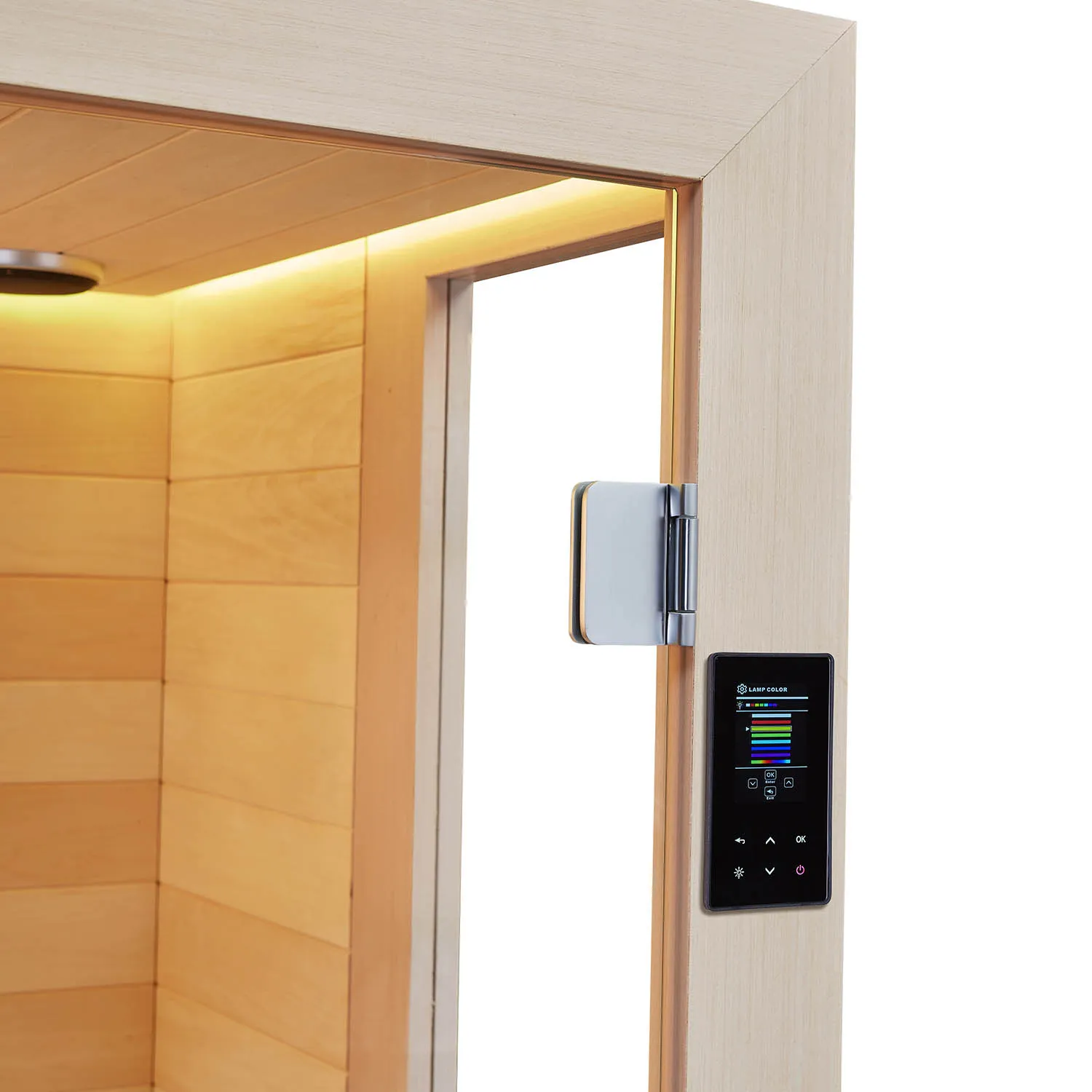
Practical Recommendations and Precautions
1. Preparatory Procedure
· Drink 200-300 ml of water;
· Cleanse your body and avoid oily skincare products;
· Prepare a towel and a change of clothes;
· Avoid bathing on an empty stomach or immediately after a meal.
2. Recommended Procedure (Using the "steam first, dry later" method as an example)
Sauna steam room (8-10 minutes):
· Adapt to the heat and humidity during this period to open pores;
· Sit in an appropriate position and breathe deeply;
· Wipe away sweat with a cold towel afterward.
Short Rest (5 minutes):
· Rehydrate and regulate your heart rate;
· Keep your body temperature from dropping too quickly.
Dry Sauna Room (6-10 minutes):
· Enhance perspiration;
· Cover your head with a towel;
· Exit immediately if you feel any discomfort.
Rinse + Rehydrate + Rest:
· Rinse with room-temperature water;
· Rehydrate again and rest in bed for 15-30 minutes;
· Gentle stretching or deep breathing exercises may be performed.
3. Precautions
· Each sauna session should be kept short;
· The total session should not exceed 30-40 minutes;
· Drinking water and replenishing electrolytes are crucial;
· Those with high blood pressure, heart disease, or skin conditions should consult a doctor beforehand;
· If the outdoor environment is cold, keep warm to avoid excessive stimulation from alternating hot and cold temperatures.
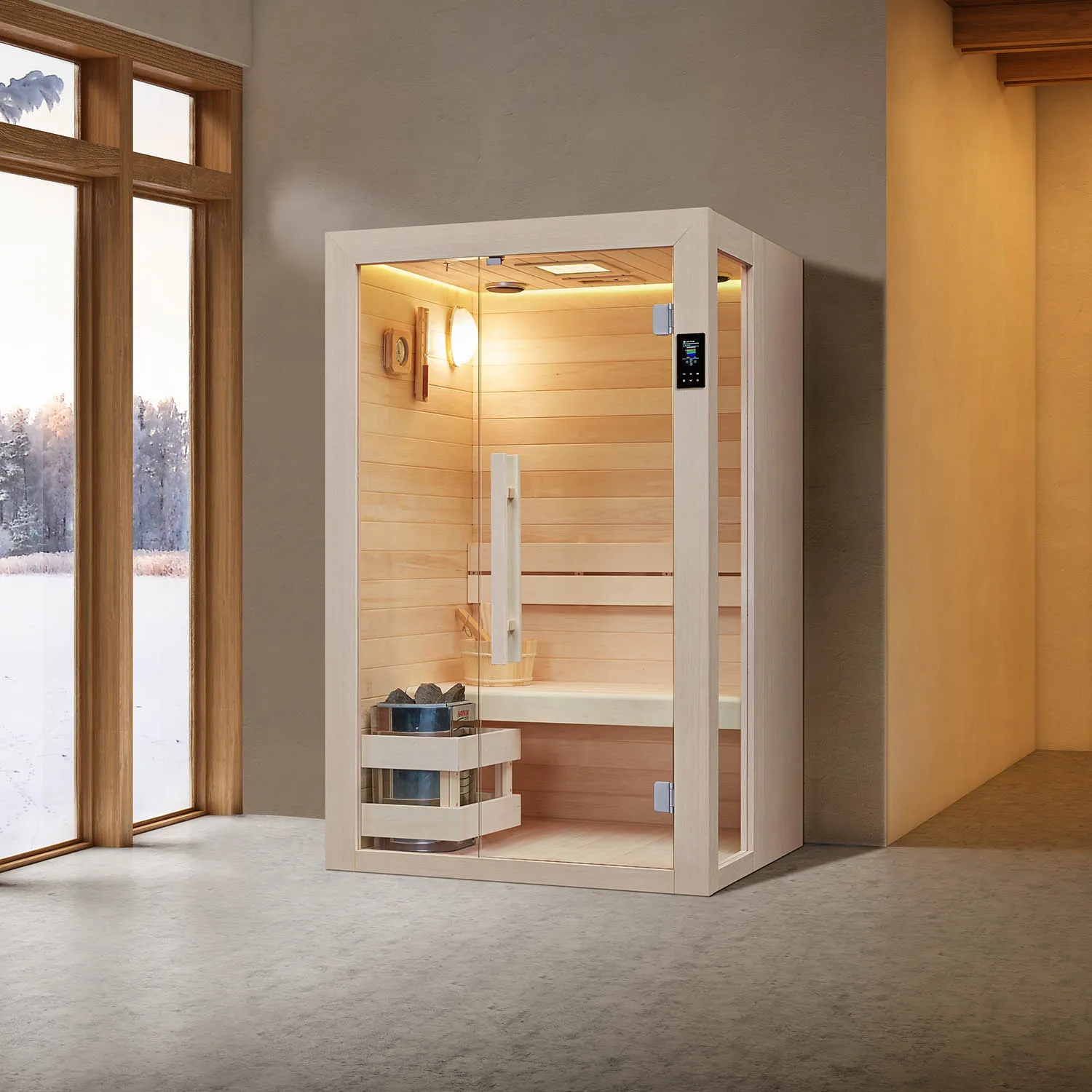
"Steam first, dry later" is the preferred sequence for outdoor sauna use
Based on a comprehensive analysis of physiological regulation mechanisms, skin reactions, safety, and comfort, "steam sauna first, dry sauna next" is the preferred sequence, particularly suitable for the following scenarios:
1. Sauna first-timers;
2. Outdoor environments in cold weather;
3. Users seeking gentle perspiration and comfortable breathing;
4. Users using high-intensity sauna steam room systems.
Of course, the actual choice should be tailored to individual fitness and goals. Mastering the correct sequence and method can maximize the complementary advantages of sauna steam rooms and dry sauna rooms, making the outdoor sauna experience more scientific, safe, and efficient.
Who is MEXDA and Why Should I Buy from This Manufacturer?
At MEXDA, under Guangdong Foshan Yuehua Sanitary Ware Co., Ltd., we specialize in producing outdoor spa, swim spa, sauna room, outdoor gazebo, steam bathroom, and massage bathtub products. With over 40,000㎡ of advanced manufacturing space and nearly 30 years of industry experience, we offer direct supply, OEM/ODM customization, and wholesale pricing from our factory in China.
Clients choose us for our reliability, high-quality, international certifications (CE, ETL, SAA), and comprehensive sales service.

